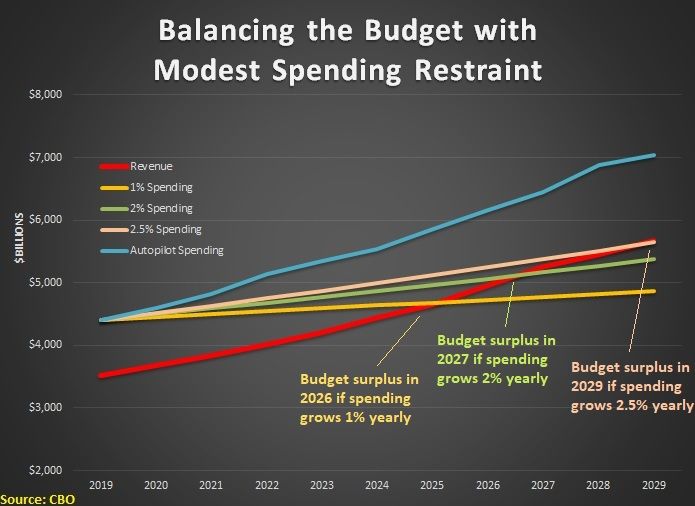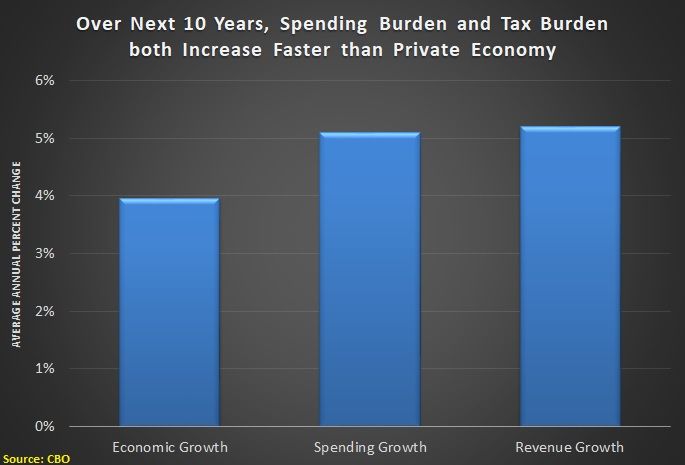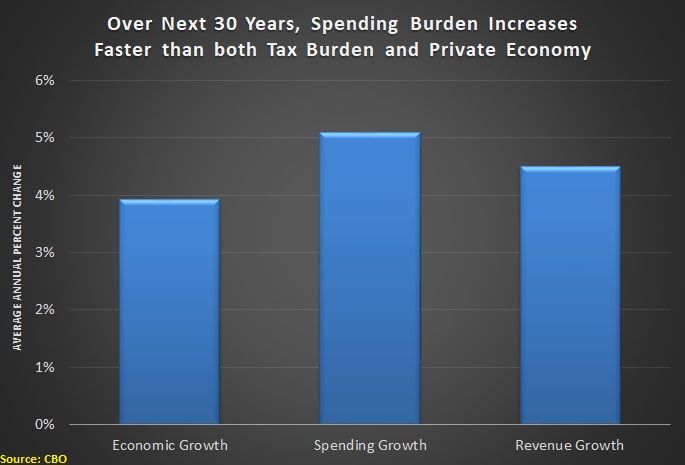
Earlier this year, I reviewed new fiscal projections from the Congressional Budget Office (CBO) and showed that balancing the budget would be relatively easy if politicians simply limited spending so that it didn’t grow faster than inflation.
Though I made sure to point out that the primary goal should be to limit the burden of spending. That’s because government spending, regardless of whether it’s financed by taxes or financed by borrowing, undermines prosperity by diverting resources from the productive sector of the economy.
We now have some new numbers from CBO. The number-crunching bureaucrats have put together their estimates of the latest Trump budget and that’s generated some predictable squabbling between Republicans and Democrats.
Most of the finger-pointing has focused on the (relatively trivial) fiscal impact of the Trump tax cuts.
The Wall Street Journal wisely put the focus instead on the growth of government.
“You wouldn’t know it from the press coverage, but there’s some modest good news about the federal budget. The deficit is rising, but not as much as feared because tax revenues are increasing due to faster economic growth. … So why has the federal deficit increased by $145 billion this fiscal year to $531 billion? Because federal spending continued to rise rapidly—7% in the first seven months to $2.571 trillion. That’s $178 billion more than in the same period a year ago. … The media blame deficits on tax reform, but the facts show the main culprit is spending. No one in the political class wants to talk about entitlements but that’s where the money is.”
The WSJ’s editorial focused on short-run data.
I want to augment that analysis by looking at medium-run and long-run numbers.
We’ll start with this chart looking at what will happen over the next 10 years. As you can see, Washington is violating my Golden Rule by allowing spending to grow faster than the private economy.
As a result, the burden of federal spending, measured as a share of gross domestic product, is projected to climb over the next decade.
That’s not good news.
(For what it’s worth, since tax revenues will be growing at the same pace as spending, there won’t be any meaningful change in the deficit as a share of GDP.)
Now let’s look at the most-recent long-run data from CBO. These numbers are even more depressing because the spending burden continues to grow faster than the private sector — a lot faster.
Which is why the burden of federal spending is projected to increase from less than 21 percent of GDP today to nearly 29 percent of GDP by 2049.
That’s terrible news.
And if you include spending by state and local governments (which currently consumes more than 11 percent of economic output and also is projected to increase), the terrible news gets even worse.
Moreover, the tax burden is projected to climb as well, and that doesn’t even include any estimate of what will happen if politicians manage to impose a value-added tax, an energy tax, a wealth tax, a financial transactions tax, or any of the other revenue-raising schemes under consideration in Washington.
In other words, the U.S. is on track to become just like Greece, France, and Italy.
P.S. There is an alternative to this dismal future. But can we convince politicians to adopt a spending cap and then make it work with genuine entitlement reform? I’m not holding my breath for any of that to happen.
Daniel J. Mitchell is a top expert on tax reform and supply-side tax policy and is Chairman of the Center for Freedom and Prosperity. Mitchell is a strong advocate of a flat tax and international tax competition.
Source material can be found at this site.












